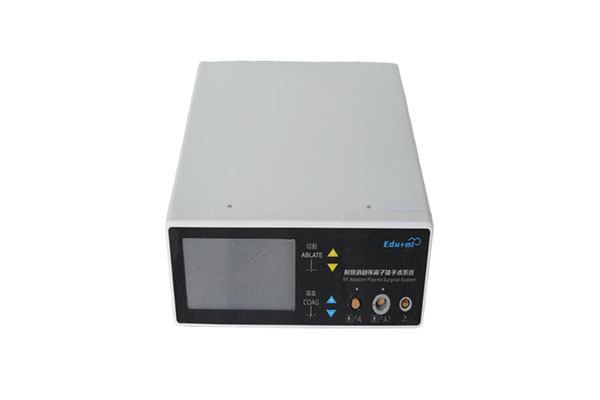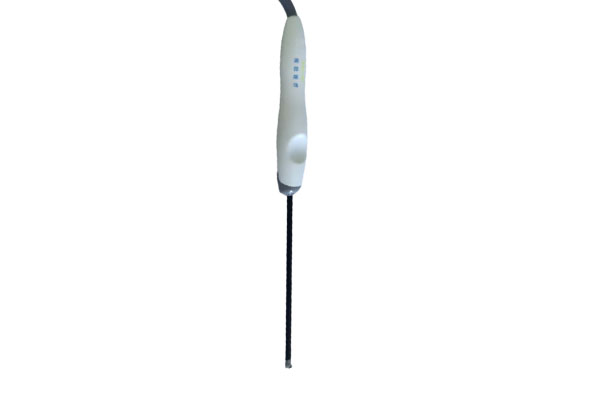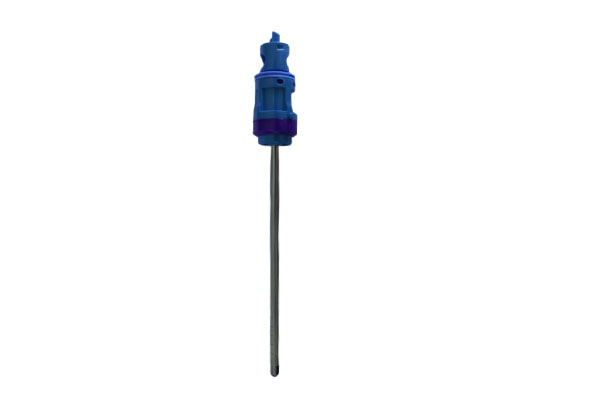How does the medical titanium plate with loop improve the success rate of fracture repair?
Release Time : 2025-07-24
Fracture is one of the common clinical traumas, and effective treatment is essential to restore the patient's normal function. In modern orthopedic surgery, the medical titanium plate with loop, as an advanced internal fixation device, is widely used in fracture repair due to its excellent biocompatibility, mechanical strength and design flexibility, and has significantly improved the success rate of treatment.
1. Material properties and biocompatibility
The medical titanium plate with loop is usually made of pure titanium or titanium alloys, which have excellent biocompatibility, which means that they do not induce immune response or rejection in the human body. Titanium is an inert metal that quickly forms an oxide film on its surface, which not only prevents further corrosion, but also promotes the growth and attachment of bone cells on its surface. This property enables the titanium plate to quickly fuse with the surrounding tissue after implantation, providing a solid support for fracture healing. In addition, titanium material also has good corrosion resistance, and will not degrade or release harmful substances even if it exists in the body fluid environment for a long time, thus ensuring the safety of long-term use. This stable material property makes the medical titanium plate with loop an ideal internal fixation device, which helps to improve the success rate of fracture repair.
2. Mechanical strength and structural design
The design of the medical titanium plate with loop fully considers the mechanical needs of human bones. Its high strength and high toughness enable it to withstand large stresses, effectively share the load of the fracture site, and avoid secondary injuries caused by premature weight bearing. The elastic modulus of the titanium plate is close to that of human bones, which means that it can better simulate the behavior of natural bones, reduce stress shielding effects, and promote fracture healing. The unique design of the titanium plate with loop also includes multiple fixing holes, which can flexibly adjust the position and number of screws according to actual needs to achieve the best fixation effect. This modular design not only improves the flexibility of surgical operations, but also can be customized according to the type and location of the fracture, ensuring that each titanium plate can accurately fit the fracture site and provide the most stable support.
3. Minimally invasive surgery and rapid recovery
Traditional fracture internal fixation surgery often requires a large incision to expose the fracture site, increasing the risk of surgical trauma and postoperative complications. Modern orthopedic surgery is increasingly inclined to adopt minimally invasive technology, and the medical titanium plate with loop is the ideal choice for this trend. Due to its thinness and strength, the titanium plate can be implanted through a smaller incision, reducing damage to the surrounding soft tissue, shortening the operation time and hospitalization time. The advantage of minimally invasive surgery is not only that it reduces intraoperative bleeding and postoperative pain, but more importantly, it speeds up the patient's recovery process. Studies have shown that patients who undergo minimally invasive surgery combined with titanium plate with loop fixation have a significantly faster recovery speed after surgery than traditional methods, have stronger early mobility, and greatly reduce the risk of complications caused by long-term bed rest, such as deep vein thrombosis and lung infection. This concept of rapid recovery not only improves the quality of life of patients, but also indirectly improves the overall success rate of fracture repair.
4. Accuracy and adjustability
The high accuracy and adjustability of the medical titanium plate with loop is another major advantage in its clinical application. Through preoperative imaging evaluation (such as X-rays, CT scans, etc.), doctors can accurately measure the size and shape of the fracture site and select the appropriate titanium plate model accordingly. During the operation, with the help of special tools and navigation systems, doctors can accurately place the titanium plate at the fracture site and fix it with multi-angle screws to ensure that each screw is in the best position to provide evenly distributed pressure support. This precision not only improves the success rate of surgery, but also reduces the risk of nonunion or malunion of fractures caused by improper fixation. At the same time, the design of titanium plate with loop allows necessary adjustments after surgery. For example, in some complex cases, it may be necessary to fine-tune the position of the titanium plate or add additional fixation devices through secondary surgery to cope with changes in the fracture healing process. This flexibility enables titanium plate with loop to adapt to various complex clinical situations, further ensuring the effectiveness of treatment.
5. Postoperative monitoring and management
Postoperative monitoring and management are an indispensable part of the fracture repair process. Another advantage of medical titanium plate with loop is its good X-ray transmittance, which enables doctors to clearly observe the fracture healing through routine imaging examinations (such as X-rays, CT, etc.) after surgery without worrying about metal artifacts interfering with the diagnosis results. This transparency not only facilitates the doctor's follow-up evaluation, but also provides convenience for timely detection and treatment of possible problems. In addition, the stability of the titanium plate also reduces the risk of postoperative reduction loss, and patients can gradually resume normal activities under the guidance of doctors without relying on external braces or plaster fixation for a long time. This scientific and reasonable postoperative management plan helps the smooth healing of fractures and ultimately improves the success rate of overall treatment.
In summary, the medical titanium plate with loop has significantly improved the success rate of fracture repair with its excellent biocompatibility, mechanical strength, precision and compatibility with minimally invasive surgery. Whether from the perspective of short-term surgical effects or long-term functional recovery, the titanium plate with loop has shown great potential and value.
1. Material properties and biocompatibility
The medical titanium plate with loop is usually made of pure titanium or titanium alloys, which have excellent biocompatibility, which means that they do not induce immune response or rejection in the human body. Titanium is an inert metal that quickly forms an oxide film on its surface, which not only prevents further corrosion, but also promotes the growth and attachment of bone cells on its surface. This property enables the titanium plate to quickly fuse with the surrounding tissue after implantation, providing a solid support for fracture healing. In addition, titanium material also has good corrosion resistance, and will not degrade or release harmful substances even if it exists in the body fluid environment for a long time, thus ensuring the safety of long-term use. This stable material property makes the medical titanium plate with loop an ideal internal fixation device, which helps to improve the success rate of fracture repair.
2. Mechanical strength and structural design
The design of the medical titanium plate with loop fully considers the mechanical needs of human bones. Its high strength and high toughness enable it to withstand large stresses, effectively share the load of the fracture site, and avoid secondary injuries caused by premature weight bearing. The elastic modulus of the titanium plate is close to that of human bones, which means that it can better simulate the behavior of natural bones, reduce stress shielding effects, and promote fracture healing. The unique design of the titanium plate with loop also includes multiple fixing holes, which can flexibly adjust the position and number of screws according to actual needs to achieve the best fixation effect. This modular design not only improves the flexibility of surgical operations, but also can be customized according to the type and location of the fracture, ensuring that each titanium plate can accurately fit the fracture site and provide the most stable support.
3. Minimally invasive surgery and rapid recovery
Traditional fracture internal fixation surgery often requires a large incision to expose the fracture site, increasing the risk of surgical trauma and postoperative complications. Modern orthopedic surgery is increasingly inclined to adopt minimally invasive technology, and the medical titanium plate with loop is the ideal choice for this trend. Due to its thinness and strength, the titanium plate can be implanted through a smaller incision, reducing damage to the surrounding soft tissue, shortening the operation time and hospitalization time. The advantage of minimally invasive surgery is not only that it reduces intraoperative bleeding and postoperative pain, but more importantly, it speeds up the patient's recovery process. Studies have shown that patients who undergo minimally invasive surgery combined with titanium plate with loop fixation have a significantly faster recovery speed after surgery than traditional methods, have stronger early mobility, and greatly reduce the risk of complications caused by long-term bed rest, such as deep vein thrombosis and lung infection. This concept of rapid recovery not only improves the quality of life of patients, but also indirectly improves the overall success rate of fracture repair.
4. Accuracy and adjustability
The high accuracy and adjustability of the medical titanium plate with loop is another major advantage in its clinical application. Through preoperative imaging evaluation (such as X-rays, CT scans, etc.), doctors can accurately measure the size and shape of the fracture site and select the appropriate titanium plate model accordingly. During the operation, with the help of special tools and navigation systems, doctors can accurately place the titanium plate at the fracture site and fix it with multi-angle screws to ensure that each screw is in the best position to provide evenly distributed pressure support. This precision not only improves the success rate of surgery, but also reduces the risk of nonunion or malunion of fractures caused by improper fixation. At the same time, the design of titanium plate with loop allows necessary adjustments after surgery. For example, in some complex cases, it may be necessary to fine-tune the position of the titanium plate or add additional fixation devices through secondary surgery to cope with changes in the fracture healing process. This flexibility enables titanium plate with loop to adapt to various complex clinical situations, further ensuring the effectiveness of treatment.
5. Postoperative monitoring and management
Postoperative monitoring and management are an indispensable part of the fracture repair process. Another advantage of medical titanium plate with loop is its good X-ray transmittance, which enables doctors to clearly observe the fracture healing through routine imaging examinations (such as X-rays, CT, etc.) after surgery without worrying about metal artifacts interfering with the diagnosis results. This transparency not only facilitates the doctor's follow-up evaluation, but also provides convenience for timely detection and treatment of possible problems. In addition, the stability of the titanium plate also reduces the risk of postoperative reduction loss, and patients can gradually resume normal activities under the guidance of doctors without relying on external braces or plaster fixation for a long time. This scientific and reasonable postoperative management plan helps the smooth healing of fractures and ultimately improves the success rate of overall treatment.
In summary, the medical titanium plate with loop has significantly improved the success rate of fracture repair with its excellent biocompatibility, mechanical strength, precision and compatibility with minimally invasive surgery. Whether from the perspective of short-term surgical effects or long-term functional recovery, the titanium plate with loop has shown great potential and value.







